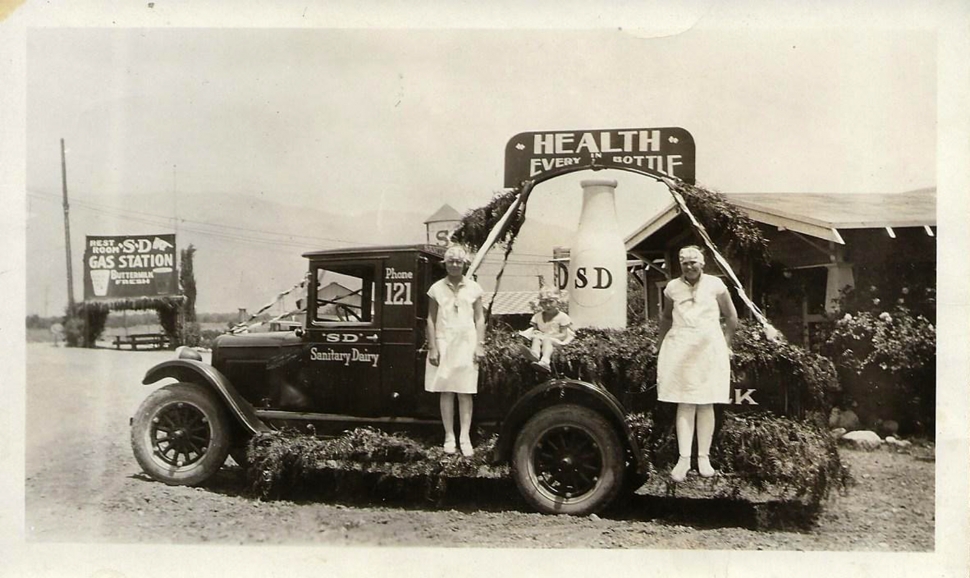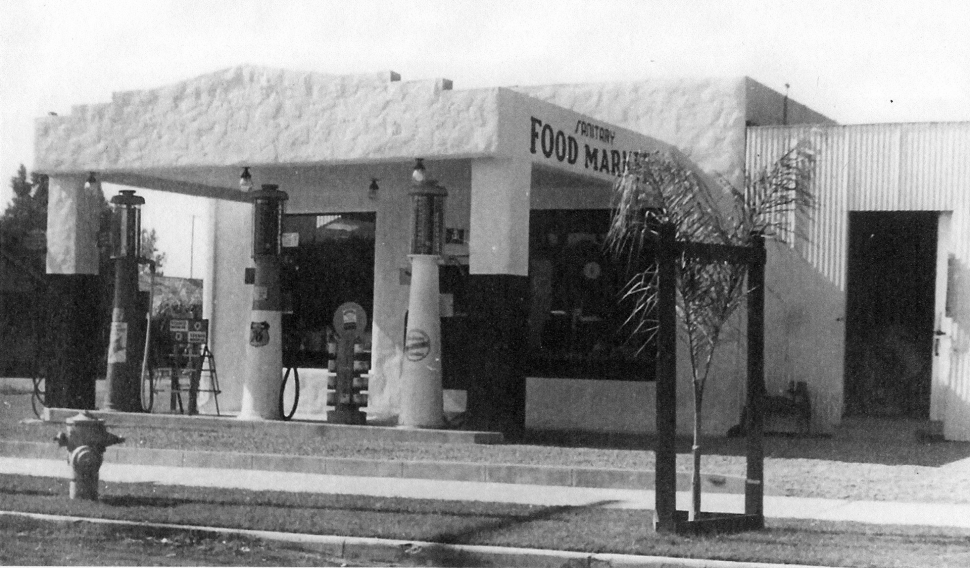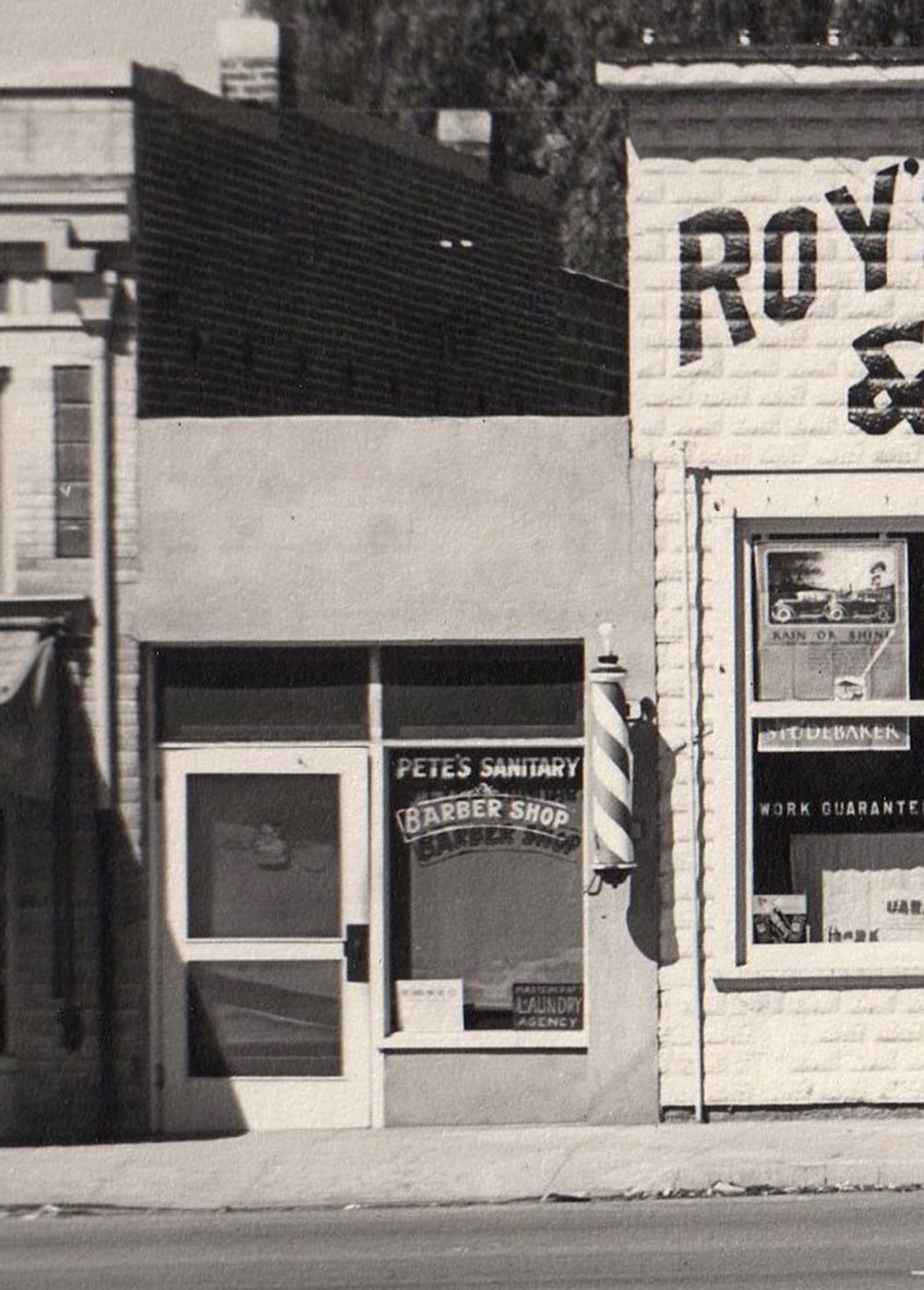|
Fillmore Historical Museum: Did You Know?
 Sanitary Dairy entry in the Fillmore Festival Parade in 1930. Photos credit Fillmore Historical Museum. By Gazette Staff Writers — Wednesday, December 7th, 2022
Part 2
 Advertisement from the Piru News, April 24, 1930.  Sanitary Food Market circa 1936.  Pete’s Sanitary Barbershop circa 1920. Courtesy Fillmore Historical Museum Correction from the last “Did You Know?” column. Fillmore Rotary began May 19, 1924 the main Rotary organization did begin 1905. Thank you to Martha Richardson. When avocadoes first began to be grown in the area, not being sure how to serve them Alice Moore Milton served the pit to visitors throwing away the flesh. In 1912, Fillmore Billiard and Amusement Parlor advertised “hot and cold baths at all hours.” At various times, Fillmore not only had the Sanitary Dairy, but a Sanitary Market, Sanitary Barber and Sanitary Bakery. J. A. Grimes of Grimes Canyon note, was the first person to own a typewriter about 1905. He complained, “the d--- thing can’t spell.” Carl Caswell “C. C.” Elkins holds several “firsts” for Fillmore: first owner of a general store; first insurance agent; first notary public; first to ship oranges out by train; first to manufacture olive oil; first justice of the peace. There are probably some left out. Fillmore’s first street lights were strung across Central Avenue between Stephenson’s Market and the Rood Harmonson Store on the north side of Main Street in 1907. John Galvin was Fillmore’s first city attorney in 1914 after incorporation. He had graduated law school in 1910. When asked how he was chosen with little experience to be city attorney, he replied, “It happened I was in the right place at the right time to draw up the incorporation papers and become the attorney. I had personality, obvious and unimpeachable character and I was the only attorney in town.” Fillmore’s first undertaker, E. A. French, also owned the Outlet Novelty Store at 330 Central Avenue. Gold was discovered in 1842 at the San Feliciano tributary of Piru Creek, by Francisco Lopez who had trained as a mineralogist at a university in Sonora, Mexico. This as six years before it was found at Sutter’s Mill. The William Shiells family donated the land for the Veteran’s Memorial Building and Library as well as Shiells Park. J. P. McIntyre, a Sespe beekeeper in the 1880s, named his daughters after flowers: Lily, Pansy, Myrtle, Violet, Iris and Flora. His son was named Robert. The first paved sidewalk was installed by George Tighe in front of his store in 1909. By 1917 there was 5 miles of sidewalk with curbing in Fillmore. For twenty years (probably with the collusion of fellow Rotarian and Postmaster J K L Schwartz) Frank Erskine answered the local children’s letters to Santa Claus. In the early 1930s Piru had three barbershop/pool hall combinations – Ideal Billiard Parlor and Barbershop owned by T. H. Green; Belty’s Barbershop (with 3 pool tables) owned by R. O. Belty; and Ruiz’s Barbershop (which also had card tables) owned by G. T. Ruiz. |
